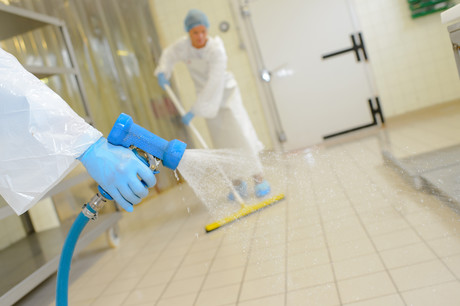What IP ratings actually mean

So your new bit of gear is ‘waterproof’. What does this mean? Can it be submerged under a metre of water, survive washdown in your plant or barely make it through a light shower?
All you need to do is look at the Ingress Protection (IP) rating. IP ratings are especially relevant in the food and beverage industry where hygiene is paramount and equipment has to survive sanitation procedures, washdown environments, direct and incidental hosing, dust and more.
There are four characters in IP ratings. The first two letters, IP, are just short for ingress protection.
Following these letters are two digits. The first gives a measure for the equipment’s level of protection against infiltration from solids — principally dust. The second digit indicates the level of protection against liquids (water).

Protection against solids
Levels of ingress protection against solids are 0–6. These levels denote the size of particles that the object is able to keep out. If it can only keep out large objects, it will have a lower rating. The higher the rating, the smaller the particle sizes that will be excluded.
- 0: No protection against contact or ingress.
- 1: Effective against objects >50 mm. Protects against large surfaces of the body (such as incidental brushing with the back of a hand) but no protection against deliberate contact.
- 2: Effective against objects >12.5 mm. Fingers or similar objects are kept out.
- 3: Effective against objects >2.5 mm. Protects against tools, thick wires, etc.
- 4: Effective against objects >1 mm. Wires, small hardware, large insects, etc will be kept out.
- 5: Dust protected. Some dust might get in, but not enough to hinder operation.
- 6: Dust tight. Complete protection against the ingress of dust.
Protection against liquids
Levels of ingress protection against liquids are 0–9K. These levels denote the movement, depth and pressure of water the device is capable of withstanding. The higher the number, the greater the water resistance. The ‘K’ designation indicates protection even with increased water pressure.
- 0: No protection against liquid ingress.
- 1: Protects against vertically dripping water, an equivalent of 1 mm rainfall/min for 10 minutes.
- 2: Protects against dripping water when tilted up to 15°. Even if the device is slightly tilted, it is still safe against the same amount of vertically dripping water as above.
- 3: Protects against spraying water. The device is safe from water lightly spraying at any angle up to 60°.
- 4: Protects against splashing water. There will be no damage from brief splashing from any direction.
- 5: Protects against water jets. Water projecting from a 6.3 mm nozzle from any direction will not cause damage.
- 6: Protects against powerful water jets. Water projecting from a 12.5 mm nozzle from any direction will not cause damage.
- 6K: Powerful water jets with increased pressure. Water projected in powerful jets (6.3 mm nozzle) from any direction, under elevated pressure.
- 7: Protects from immersion up to 1 m deep for up to 30 minutes.
- 8: Protects from immersion more than 1 m deep for extended durations.
- 9K: Protects against powerful high temperature water jets. Protected against close-range high-pressure, high-temperature spray downs.
Especially for high-pressure, high-temperature washdown applications IP69K
An IP69K rating indicates the item is both dust-tight and able to withstand high-pressure and steam cleaning. The test specifies a spray nozzle that is fed with 80°C water at 8–10 MPa and a flow rate of 14–16 L/min. The nozzle is held 10–15 cm from the tested device at angles of 0°, 30°, 60° and 90° for 30 seconds each. The test device sits on a turntable that rotates at 5 rpm.
Premium snack maker meets growing demand
UK chip manufacturer Burts has greatly increased its production capacity, enabled by TNA's...
Heat exchangers expand ginger beer production
Bundaberg Brewed Drinks ensured the equipment in its new Master Brewery maintained product...
In-house ginger processing for beverage maker
A ginger beer manufacturer reduces its supply risk by investing in pack-house technology to...














